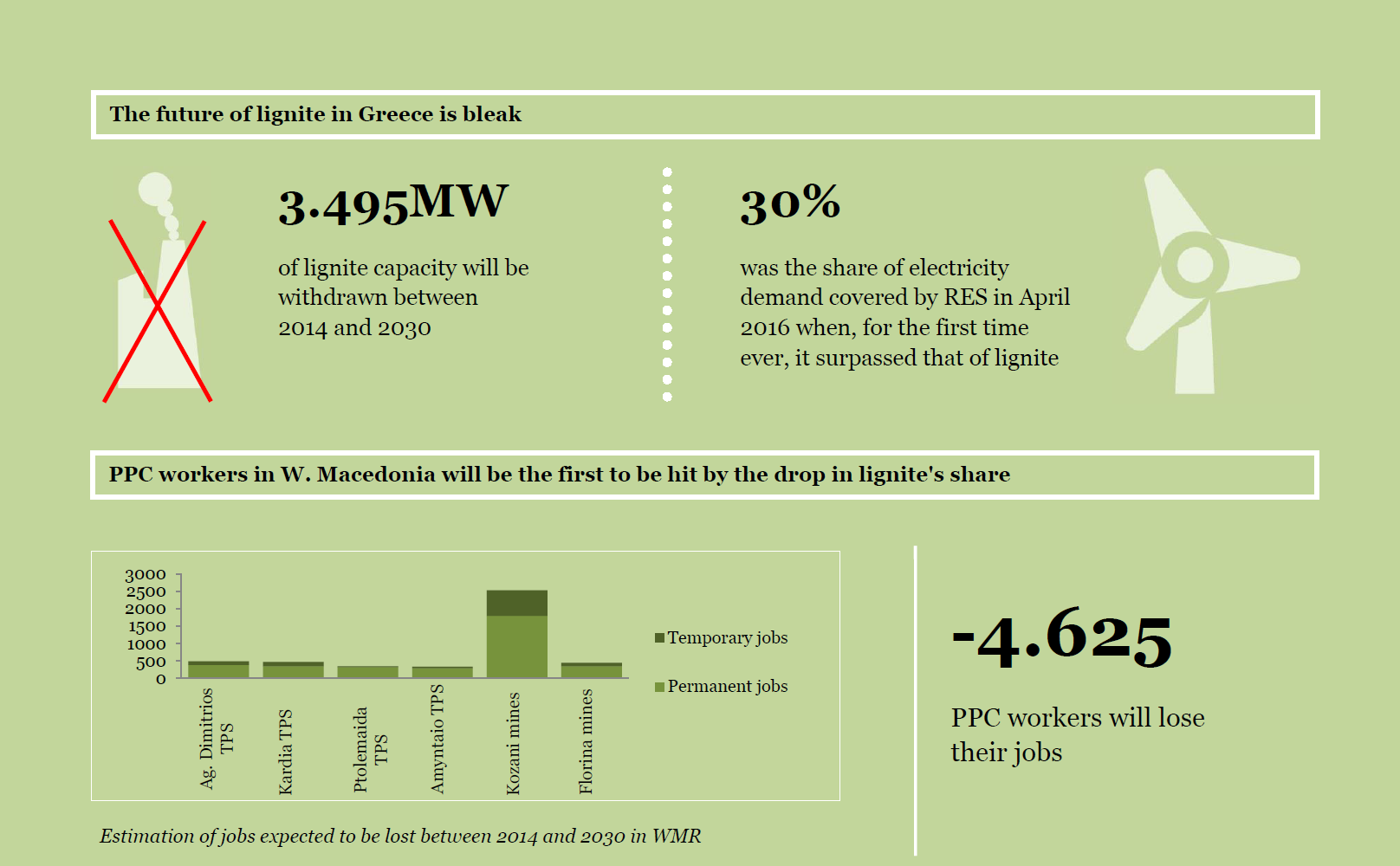Is there a future for Western Macedonia without lignite?
Thursday, 14 July 2016
There is an alternative route for the economy of Western Macedonia, which for decades is being severely undermined to supply electricity to the entire country. This is what two new reports, that WWF Greece made public today, show.
Two reports which show the route towards sustainable economic development in Western Macedonia, were published today by WWF Greece:
- “Roadmap for the Transition of the Western Macedonia Region to a post-lignite era”
- “Alternatives to the district heating systems of W. Macedonia – The case of Ptolemaida”

As the first study shows, there exist 12 sustainable, alternative economic activities, which can end the economic stagnation and stalemate which lignite areas are facing, lead them to a post-lignite era, and pave the way for a new energy path for the whole country. The second study proves that the supply of heat energy to the cities in W. Macedonia can be ensured at competitive prices even without lignite.
The two studies by WWF Greece essentially address a fundamental question which does not only concern the energy "heart" of Greece, but the rest of the country, too: Since the end of lignite is approaching, what will be the next day for the economy of Western Macedonia which was so far dominated by lignite and how can a smoother transition to the post lignite era be achieved?
The numbers speak for themselves. Based on the latest official data from the Hellenic Statistical Authority (HSA), the first report shows that the projected retirement of approximately 3,500 MW of lignite capacity currently operating in the Region of Western Macedonia (WMR) by 2030 will lead to a loss of 6,128 jobs and € 1.14 billion local income in a region that is already a champion in unemployment. Insisting on constructing new lignite plants such as Ptolemaida V and Meliti II, will not solve the problem, since, as the study shows, they can recover only 30% of the losses, despite the fact that their construction will require investments of about € 2.5 billion.
“Roadmap for the Transition of the Western Macedonia Region to a post-lignite era”
For this purpose, a specific plan for the transition of W. Macedonia to the post-lignite era was developed and the necessary investment cost was evaluated. In the primary sector emphasis was placed on the cultivation of Kozani saffron, aromatic and energy plants, along with the further development of forestry. In the secondary sector, the fundamental pillar was the development of Renewable Energy Sources, energy savings, waste management, fly ash processing, and the processing of aromatic plants. Finally, the tertiary sector relied on the development of tourism, with an emphasis on industrial tourism and ecotourism, as well as on carrying out research in academic institutions and research centres in Western Macedonia.
Even in the “mild development” scenario developed with the most conservative assumptions for the 12 selected economic activities, the economy of Western Macedonia does not collapse, as almost all the jobs that will be lost from the retirement of lignite plants can be recovered, and greater local income can be generated. The “medium development” scenario leads to 2,197 more jobs than those lost until 2030 due to the severe reduction in lignite-related activities, and generates €0.7 billion more local income compared to the “inaction” scenario. The implementation of the "strong development” scenario generates nearly twice as many jobs (11,595) and more than twice the local income (€ 2.48 billion) that will be lost the next fifteen years, while the necessary investment cost (€ 2.35 billion) is comparable to the cost of the two new lignite units that PPC is planning on constructing. The report concludes by highlighting potential funding sources for implementing the aforementioned transition plans in the next 15 years.
“Alternatives to the district heating systems of W. Macedonia – The case of Ptolemaida”
The second study shows that the dilemma 'lignite or heating oil" to meet the heating needs of the district heating network is not valid, and highlights cost competitive alternatives based on renewable energy sources. Six scenarios were examined consisting of different mixtures of 4 RES technologies and the city of Ptolemaida in W. Macedonia was used as a case study. The economic evaluation showed that the scenario which combines cogeneration of heat and power (CHP) using solid biomass with CHP from biogas and solar thermal systems and heat pumps, strikes the best balance between economic efficiency and raw material (biomass) requirements, and it may even lead to a reduction of the current prices of heat energy.
“As recent developments in international climate and environmental policy foreshadow a bleak future for Greece’s lignite-based model for electricity production, Western Macedonia finds itself in front of a critical dilemma: Will it remain attached to lignite, which is strangling almost all other economic activities, while destroying the environment and public health, or will it change course? These two reports show that the gradual phase out of lignite and the timely shift to sustainable economic activities are capable of stopping the looming explosion of unemployment and the collapse of the local economy, while providing the region with a new development impetus” said Nikos Mantzaris, Climate and Energy Officer of WWF Greece.
Share this



